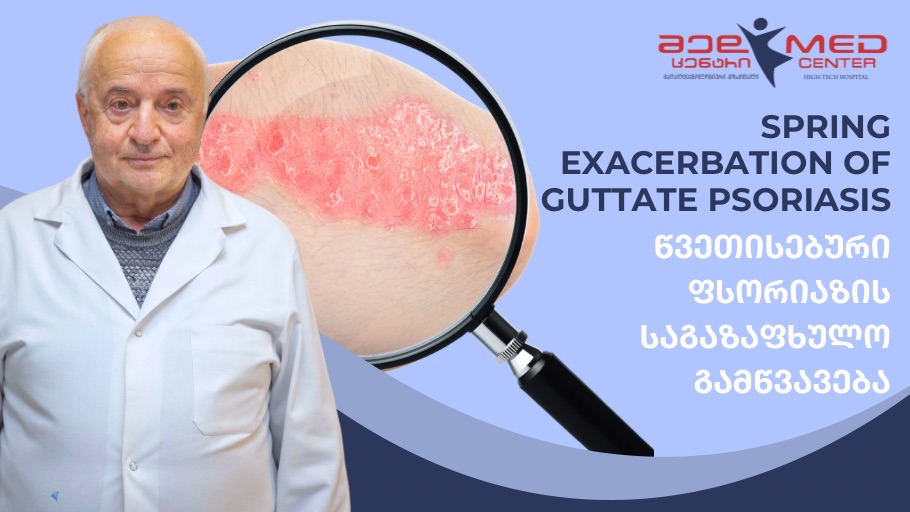Spring exacerbation of guttate psoriasis

The spring exacerbation of teardrop psoriasis is a period when people suffering from this dermatological disease experience an increase in symptoms in the spring, most often as a result of exposure to changing climatic conditions and other environmental factors.
Teardrop-shaped psoriasis is characterized by the appearance of small, teardrop-shaped plates on the skin, most often on the trunk, back, legs and arms. The spring exacerbation of this type of psoriasis may be due to several factors.
Firstly, changes in humidity and air temperature can affect the condition of the skin. In spring, there is often a transition from dry winter air to wetter spring air, which can cause a reaction in people with skin problems.
Secondly, the ultraviolet rays of the sun, which become more intense in the spring, can have both positive and negative effects on the skin. In small doses, ultraviolet light can reduce the symptoms of psoriasis, but with excessive exposure, the disease may worsen.
Also, the spring exacerbation of teardrop psoriasis may be associated with lifestyle changes in the spring. People begin to spend more time outdoors, which can lead to increased sweating and skin irritation, contributing to an exacerbation of psoriasis.
To reduce the risk of a spring exacerbation of teardrop psoriasis, it is recommended to follow a number of precautions. Include hydration, sun protection in your skin care regimen and avoid overheating and prolonged exposure to direct sunlight. It is also worth paying attention to nutrition, including more fruits and vegetables rich in antioxidants in the diet, which can help in maintaining healthy skin. In case of exacerbation of symptoms, you should contact a dermatologist to prescribe appropriate treatment.
Doctor: Nodar Putkaradze, dermatologist


 ქართული
ქართული Русский
Русский